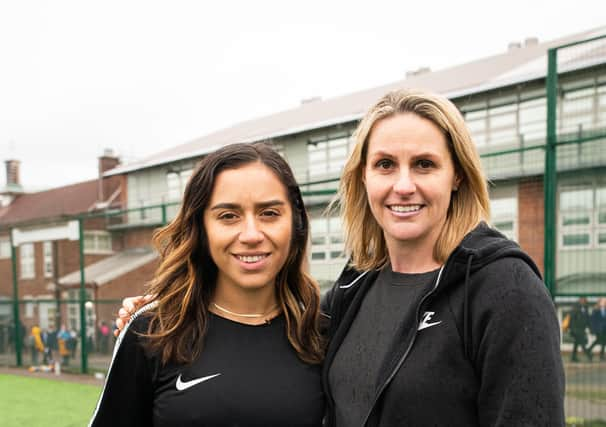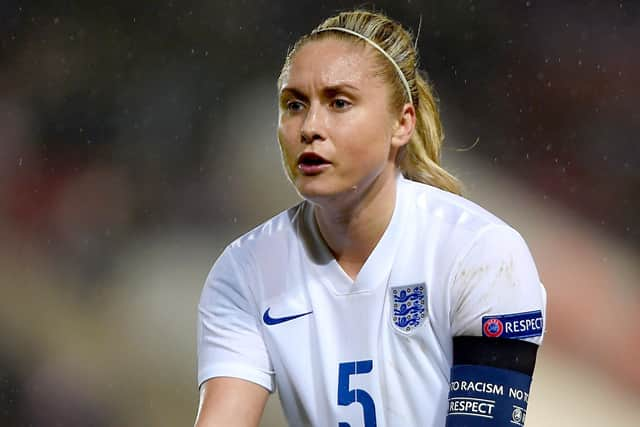Why there has never been a better time for girls to get involved in football


On Monday, the 117-capped former England striker and Fulham’s Chelcee Grimes were coaching at Sheffield’s Firth Park Academy as part of a programme to build on the growing popularity of the women’s game and provide all girls with the opportunity to play by 2024.
The Barclays-backed FA Girls’ Football School Partnership is about more than just providing future players for the Women’s Super League (WSL). Making girls more active is important in boosting their confidence and tackling childhood obesity. This generation has advantages scheme ambassadors 41-year-old Smith and even 27-year-old Grimes did not.
Advertisement
Hide AdAdvertisement
Hide Ad“We had to play with boys and we kind of got abused for being a girl,” explains Smith. “I was seen as a freak for wanting to play.


“It was about building teamwork, resilience, communication and confidence. It’s about having fun, too.
“So many kids are on computers all the time and not getting out, breathing fresh air, getting endorphins and making you feel good about yourself. There’s a lot of obesity, too.
“When I played, a lot of people lost money playing for their country or their club. I was doing a BTEC sports science degree, working in McDonald’s and a dogs’ kennel. It was knackering.
Advertisement
Hide AdAdvertisement
Hide Ad“You were training at night because you didn’t get on until after the men finished, then going to college the next day. I only trained a couple of hours a week with Arsenal. I wanted to be a professional so I took myself off to America. Now, we’ve got a full-time professional league so when youngsters ask me if they should play in America I tell them they don’t need to, they’ve got it all on their doorstep, a pathway of youth international teams from (under-16s), all the way up. At 16, I was straight into the senior side.”
Today’s girls also have female role models. England’s 2019 World Cup semi-final had peak TV viewing figures of 11.7m, November’s friendly against Germany was watched by 77,768 at Wembley, WSL attendances are breaking records, and the Lionesses’ games in the She Believes Cup, which concludes with USA v Japan tonight, have been on the BBC.
“The games were never on TV, just the FA Cup final,” recalls Smith. “Every player I looked up to was male. If you ask them their favourite player now, girls will say the likes of Steph Houghton and Fran Kirby. It’s nice to hear that rather than Wayne Rooney or the same old names. Even boys at women’s games want to be like Steph Houghton. It’s about normalising it.”
A study this week by Online Casinos ranked Houghton as the most inspirational player in the Lionesses’ squad, with Harrogate’s Rachel Daly fifth.
Advertisement
Hide AdAdvertisement
Hide AdGrimes is best known for her music, having written for The Saturdays, Kesha, Dua Lipa and Kylie Minogue as well as performing herself, but she puts it down to football.
“I felt I could do anything if I could play on a boy’s team and take a bit of grief,” she says.
It is not just about the girls having confidence, argues Smith.
“A big reason why football lessons aren’t put on in schools is because female teachers aren’t confident in doing it if they’re not really interested in football,” she argues. “We’re training teachers to be more comfortable or having coaches work alongside them.
“We want to get the message across that it’s okay for girls to play football, you know?”
Comment Guidelines
National World encourages reader discussion on our stories. User feedback, insights and back-and-forth exchanges add a rich layer of context to reporting. Please review our Community Guidelines before commenting.